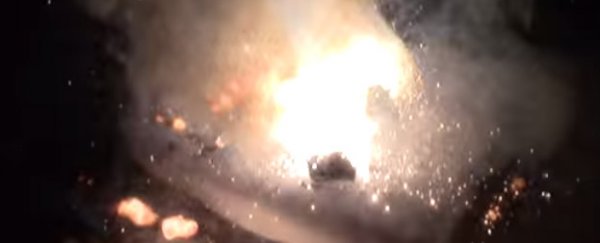Researchers at the International Centre for Radio Astronomy Research have discovered the largest explosion ever observed in the universe since the Big Bang.
The explosion emanated from a supermassive black hole at the center of the Ophiuchus galaxy cluster some 390 million light-years from Earth.
"We've seen outbursts in the centres of galaxies before but this one is really, really massive," Melanie Johnston-Hollitt, professor at the Curtin University node of the International Centre for Radio Astronomy Research and co-author of the paper uploaded to preprint archive arXiv earlier this month, said in a statement.
"And we don't know why it's so big."
To make the discovery, the researchers used four telescopes across the globe, including NASA's Chandra X-ray Observatory and the European Space Agency's XMM-Newton X-ray space observatory.
It was such a violent explosion that it literally punched a hole in the plasma surrounding the black hole, as spotted through X-ray telescope observations of the galaxy cluster.
 (CXC/Naval Research Lab/Giacintucci, S/XMM/ESA/NCRA/TIFR/GMRTN/2MASS/UMass/IPAC-Caltech/NASA/NSF)
(CXC/Naval Research Lab/Giacintucci, S/XMM/ESA/NCRA/TIFR/GMRTN/2MASS/UMass/IPAC-Caltech/NASA/NSF)
Simona Giacintucci, from the Naval Research Laboratory in Washington DC and lead author, compared the blast to the 1980 eruption of Mount St. Helens — one of the most violent volcanic eruptions in US history.
"The difference is that you could fit 15 Milky Way galaxies in a row into the crater this eruption punched into the cluster's hot gas," Giacintucci said in the statement.
The blast was not only gigantic, but also extremely slow.
"It happened very slowly — like an explosion in slow motion that took place over hundreds of millions of years," Johnston-Hollitt explained.
Scientists at NASA were able to confirm the unprecedented blast. "The radio data fit inside the X-rays like a hand in a glove," co-author Maxim Markevitch from NASA's Goddard Space Flight Center said in the statement. "This is the clincher that tells us an eruption of unprecedented size occurred here."
The discovery could open doors for further discoveries like this one.
"It's a bit like archaeology," Johnston-Hollitt said. "We've been given the tools to dig deeper with low frequency radio telescopes so we should be able to find more outbursts like this now."
The team is now looking to make further observations with twice the number of antennas, increasing sensitivity tenfold, according to Johnston-Hollitt.
This article was originally published by Futurism. Read the original article.
